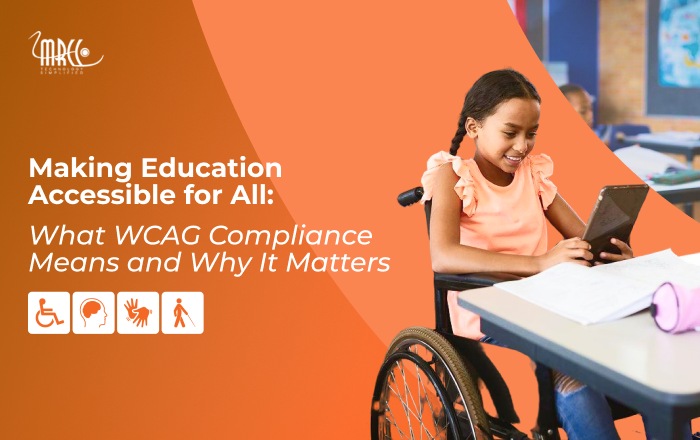Jul 1 2025
Making Education Accessible for All: What WCAG Compliance Means and Why It Matters

Senior Director, Learning Solutions

Jul 1 2025

Senior Director, Learning Solutions

The educational landscape looks vastly different now than a decade ago. Today’s digital-first classrooms are as likely to exist online as they are in brick-and-mortar schools. Lessons may be shared via learning platforms, homework submitted through apps, and group work in Google Docs or discussion boards.
This digital transformation is exciting, but it also raises a critical question:
Is everyone able to participate? While this digital shift opens doors for many students, it can close them for others if accessibility isn’t prioritized.
Accessibility in education means ensuring that all students, including those with special abilities, can access, understand, and engage with learning materials and experiences. Disabilities can include vision impairments, hearing loss, mobility limitations, cognitive challenges, and more.
Accessibility in education isn’t about creating a separate experience; it’s about ensuring everyone can fully engage with learning content—easily, equally, and independently.
And that’s where WCAG compliance comes in.
Web Content Accessibility Guidelines (WCAG) are internationally recognized standards created by the World Wide Web Consortium (W3C). Think of WCAG as a toolkit for inclusivity. It lays out clear, technical, and design-related ways to ensure content works for everyone, whether they’re navigating with a mouse, a screen reader, or a keyboard.
There are three levels of WCAG compliance:
Most schools, universities, and educational platforms are aiming for WCAG 2.1 Level AA compliance, a solid benchmark that covers most accessibility needs without being too burdensome to implement.
WCAG is built on four core principles which are easy to remember by the acronym POUR:
This isn’t just about meeting legal requirements (though yes, ADA and Section 508 apply here). It’s about creating learning environments that empower every student to thrive.
When you build accessible digital experiences, you’re not just helping a small group; you’re improving usability for everyone. Think of captions helping a student on a noisy bus, or simple layouts helping a parent navigate their child’s online portal after a long day.
That’s the million-dollar question, right? The good news is you don’t have to figure it out alone.
At MRCC EdTech we help companies ensure their products meet all learners’ needs by:
Whether you’re starting from scratch or improving what you already have, we’re here to support your journey.
Accessibility isn’t just about compliance; it’s about equity, because education is a right, not a privilege. As digital learning becomes the norm, accessibility must be at the core of every platform, page, and program.
If you’re wondering where to start, or how to make sure your digital learning tools are truly inclusive, reach out to us. Even a short consultation can uncover quick wins and long-term improvements.
Because when education is accessible, everyone wins.
Leave A Reply
Your email address will not be published. Required fields are marked *